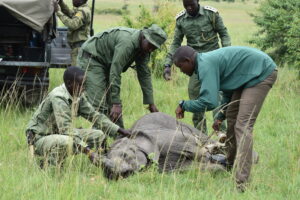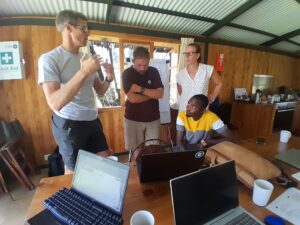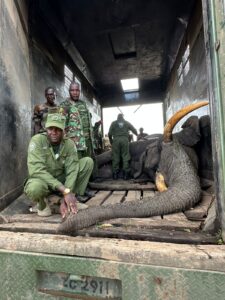The Mau Forest complex covers 1,800 km2 in the eastern portion of Kenya. This forest is the water tower for the vital Mara River, Ewaso Ngiro, Sondu and Nyando and is critical habitat for over 600 elephants and the critically endangered mountain bongo antelope. Due to high levels of poaching and illegal logging, the elephants living in the Mau Forest complex are in danger.
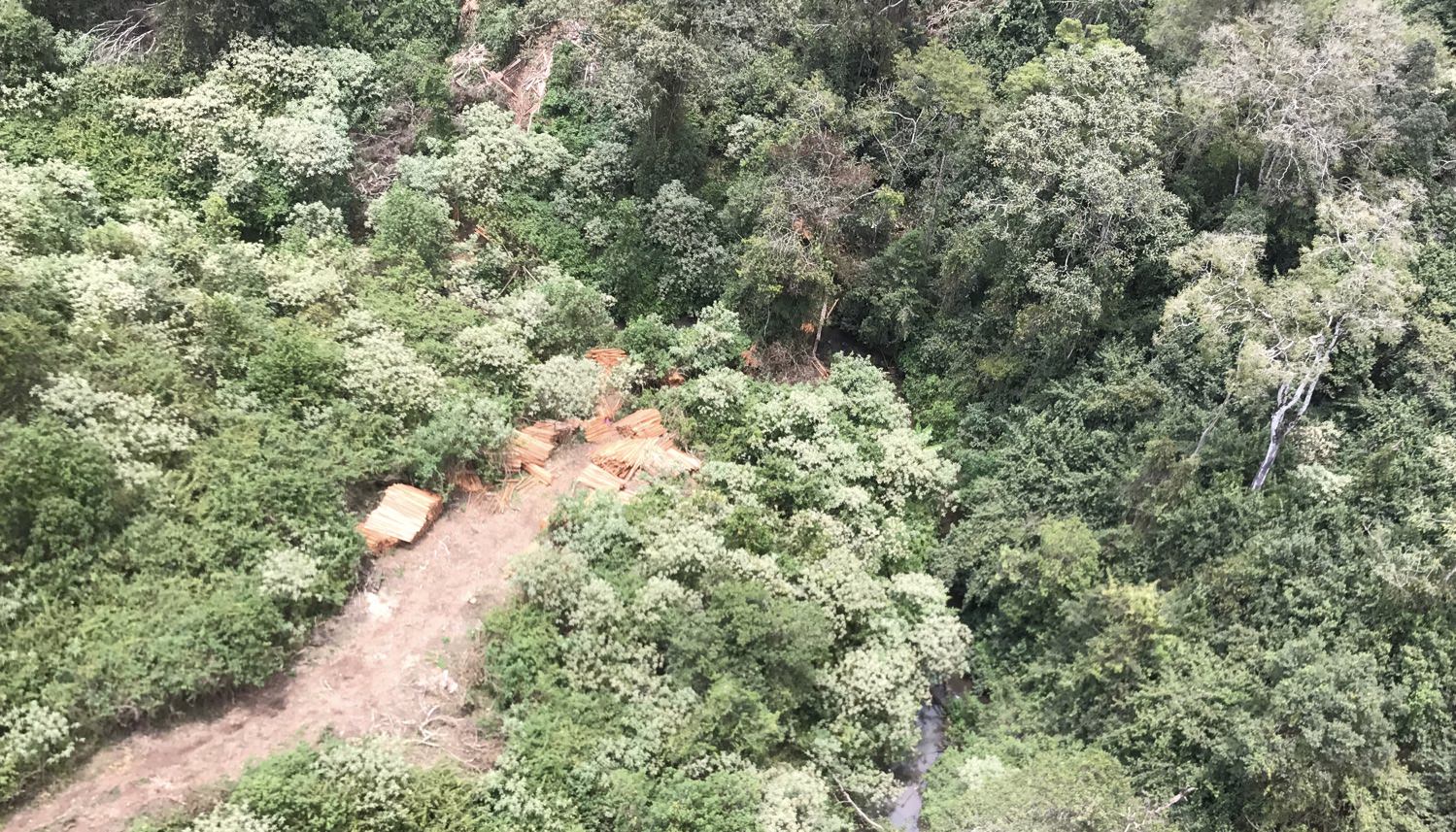
An illegal logging operation in the Mau Forest photographed from the air in the Karen Blixen Camp Ree Park Safari helicopter.
The elephant carrying capacity of forests in Kenya is heavily threatened by anthropogenic pressures (i.e. land encroachment for settlement and forest degradation through grazing, fires, illegal logging for timber, charcoal and firewood, and wildlife poaching). Although forests may contain a quarter of Kenya’s total elephant population, knowledge on the status of forest-dwelling elephants in Kenya is outdated with little reliability. The Mau Forest complex forms the largest canopy forest ecosystem in Kenya. It is the single most important water catchment in the Rift Valley and western Kenya. Estimates in 2016 suggest there are 0.45 elephants/km2 that represents 652 total elephants that are restricted to the “elephant block,” which is comprised of around 1,458 km2 of the south western Mau Forest, Trans-Mara, Ol Pusmoru and Maasai Mara blocks. Current management policies are insufficient to protecting the Mau Forest complex and urgent action is required to stop the poaching of elephants, the destruction of the forests by illegal logging operations and ensure the safety of the surrounding communities.
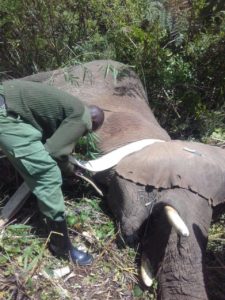
Elephants in the Mau Forest have never been studied until recently when MEP collared the first two candidates in the eastern portion of the forest. These elephants were both collared in the fourth quarter of 2017 and have already provided an immense amount of data for elephant movements. The female, Nancy, (pictured left) is a member of a herd of over 50 elephants that are at risk, so we monitor her daily to ensure the overall well-being of her herd. The male, Wlber, represented a crop raiding male elephant that was staging in the forest during the day and going into farms bordering the forest at night. His movements have allowed MEP to create geo-fences around the most vulnerable bordering farms thus alerting us when he’s nearing or entered the farms so that we can rapidly respond with our ranger units or helicopter.
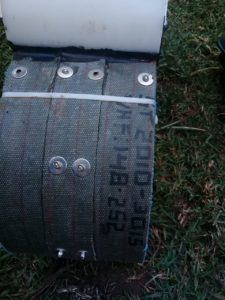
Unfortunately, in March 2018, Nancy’s collar dropped off due to the rough conditions of the forest. Since this was one of MEP’s first collaring experiences with a forest elephant, we didn’t anticipate the wear-and-tear her collar would take from the dense foliage. So, after a few months of experimentation, Savannah Tracking developed a Kevlar collar (pictured left) to withstand the treatment in the forest. This enabled MEP to confidently collar a new female candidate in the south western portion of the forest with a Kevlar collar. Kevlar is a strong synthetic fiber that increases the collar’s durability over the conveyor belt material originally used.
MEP is happy to announce that on Thursday, July 12 we were able to successfully re-collar a female elephant candidate in the southwestern portion of the Mau Forest with help from the Kenya Wildlife Service vet Dr. Limo. Though not the original elephant, Nancy, this female is with a herd of five that will also gather similar important movement data for MEP.
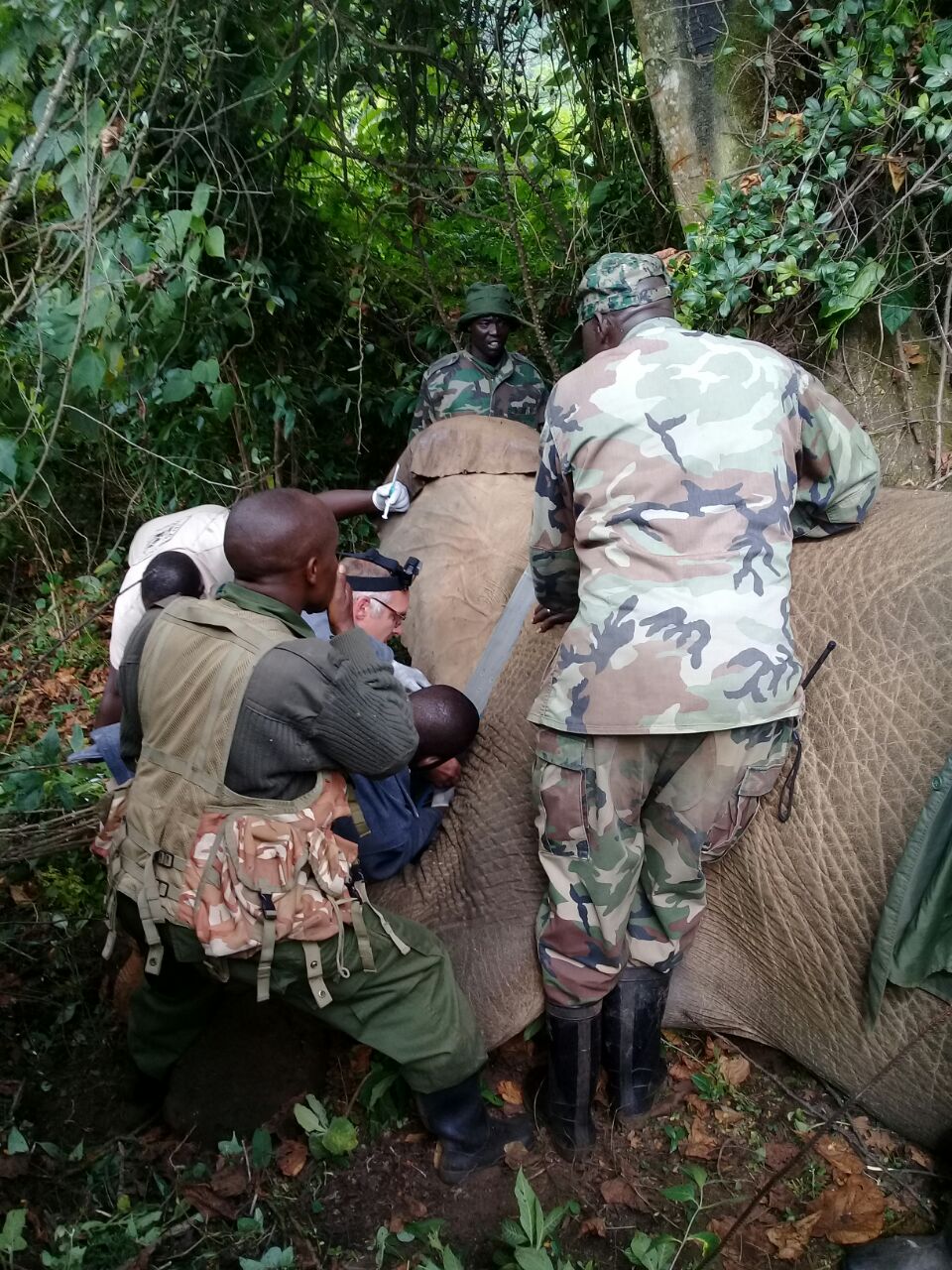
The new female elephant candidate in the southwestern portion of the Mau Forest.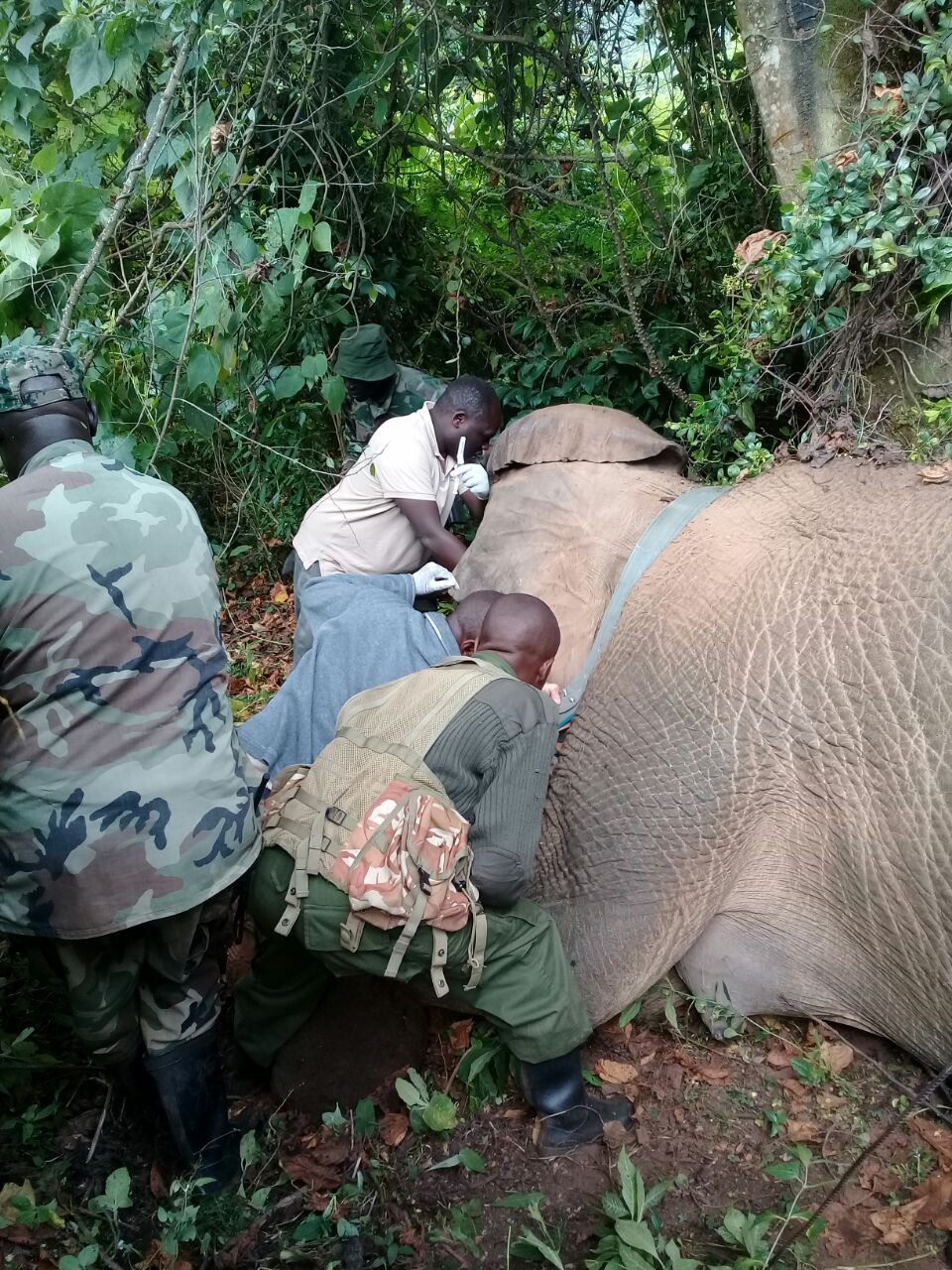
KWS vet Dr. Limo at work monitoring the well-being of the elephant while the collar is set in place.
This female’s location is essential because now that we have a female in the western portion and a male in the eastern portion we might find from movement data that the two areas of the forest are connected and elephants pass between them. Their movement data ensures we’re able to collect valuable data for a three-year period that will inform government policy and establish the case for more ranger presence in the forest thus shutting down illegal logging and poaching operations, mitigating human-elephant conflict and ensuring the bordering communities are safe. We need to collar two additional elephants in the Mau Forest in 2018 and expand the capacity of the ranger team into the western portion of the Mau Forest. Collaring these additional elephants will allow us to set up geo-fences to protect farms to mitigate human-elephant conflict. Our rapid response units having a permanent presence in the forest enforces with the surrounding communities that MEP is here to keep elephants and communities safe and to protect the ecosystem from further destruction. Rooting out illegal logging operations, arresting poachers and mitigating human-elephant conflict in the forest will not only reduce the percentage of illegally killed elephants (PIKE) in the forest, it will also ensure the well-being of communities bordering this endangered habitat.
If you’re interested in supporting the collaring initiative for the Mau Forest, please contact claire@maraelephantproject.org to learn more.
